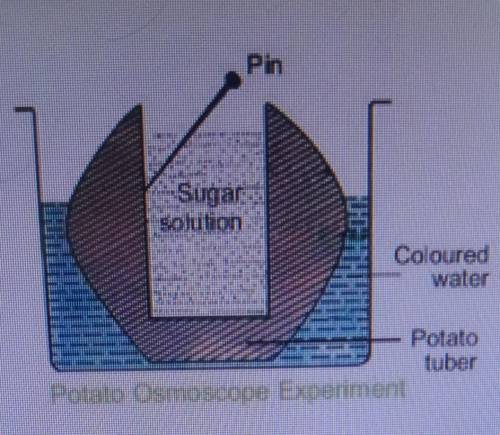1) what process does the experiment demonstrate?
2)explain the process ?
3)is sugar solution h...

Biology, 25.11.2020 09:20 Kkampudiaa
1) what process does the experiment demonstrate?
2)explain the process ?
3)is sugar solution hypotonic?


Answers: 2


Other questions on the subject: Biology

Biology, 22.06.2019 11:30, aaron0828
2. cheryl hears a new song on the radio every day during the week on her commute to work. surprisingly, when the song comes on at a party on saturday night, she knows most of the words without trying. describe the three ways that we use cognition to learn without reinforcement. which type of cognitive learning without reinforcement best explains how cheryl knew the song lyrics? explain your answer.
Answers: 1

Biology, 22.06.2019 11:30, alvaradolm9723
Female luna moths (actias luna) attract males by emitting chemical signals that spread through the air. a male hundreds of meters away can detect these molecules and fly toward their source. the sensory organs responsible for this behavior are the comblike antennae visible in the photograph shown here. each filament of an antenna is equipped with thousands of receptor cells that detect the sex attractant. based on what you learned in this chapter, propose a hypothesis to account for the ability of the male moth to detect a specific molecule in the presence of many other molecules in the air. what predictions does your hypothesis make? design an experiment to test one of these predictions.
Answers: 1

Biology, 22.06.2019 14:00, queenkimm26
The dense layer of connective tissue that surrounds an entire skeletal muscle is the
Answers: 1

Biology, 22.06.2019 14:30, shaferxspecial3737
What is a difference between systemic and pulmonary circulation? a. systemic circulation carries oxygenated blood to the lungs and pulmonary circulation carries deoxygenated blood to the body. b. systemic circulation carries deoxygenated blood to the lungs and pulmonary circulation carries oxygenated blood to the body. c. systemic circulation carries deoxygenated blood to the body and pulmonary circulation carries oxygenated blood to the lungs. d. systemic circulation carries oxygenated blood to the body and pulmonary circulation carries deoxygenated blood to the lungs.
Answers: 1
You know the right answer?
Questions in other subjects:






Mathematics, 28.01.2020 16:49

Mathematics, 28.01.2020 16:49



Social Studies, 28.01.2020 16:49



